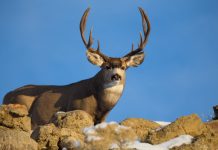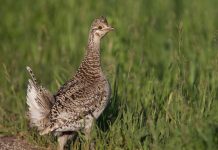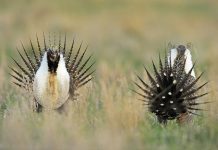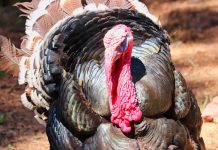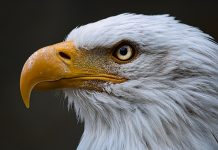Written by: Jeremy Olsen
Habitat
The chukar partridge, a native to the Middle East and southern Asia has become one of the most popular upland game birds in North America. Although it is one of the most popular game birds for hunters, it is also one of the most challenging upland game birds to pursue. This challenge is why a lot of hunters will say that chukar is their favorite bird to hunt. The reason these birds are so challenging to hunt is that there is more than just an objective of finding the birds. Chukar hunting tests both your dog and your personal strength.
The first step to finding chukars is finding high ground. Chukars thrive in dry, mountainous areas that have rocky outcroppings and an abundance of grasses and sagebrush. Chukars use steep, rocky mountain hillsides for easy escape routes to get away from predators and hunters. In order for hunters to find chukar, they must find the proper habitat. The best places to hunt the mountains where chukars live is on the slopes that receive the most sunlight-especially in the winter with snow on the ground. For example: if you live in the western states the east and south sides of mountains are the slopes that receive the most sunlight.
Where to Find Chukars
Most of the time when hunting chukars you will have to hike to higher ground on the mountain. Occasionally there are times where you will find chukars in the low lands. But when you gain elevation on the mountain, you better your odds of finding birds. In my experience of hunting chukars, most of the time when there is a road up the mountain and you don’t have to hike all the way up, you will find more and more hunters that hunt there. When a lot of people hunt a piece of property, birds become very hard to find and become very educated and familiar with hunters. On the other hand, there are mountains that you have to hike in order to find chukars. More often than not, birds will be less pressured if the hunting area requires hunters to hike rather than drive up mountains.
Strategy
When you are hiking mountains for chukar, listen closely. Chukar partridge will often times give you a clue of where they are. Chukars communicate with each other with sounds such as chukachakachuka (probably why they’re called chukars). Often times you will hear a covey or group of chukars making this noise. It almost sounds like they are laughing at you. When the birds make this noise it is often easy to get an idea of where the birds might be. A very good tool for when you are chukar hunting is binoculars. Often times you will be able to spot the chukars through your binoculars after you get an idea of where they are. When you get a good idea of where the birds are, it is best to approach the birds from above or from a side hill route. Often times when these birds are approached from below they will not flush they will only run uphill. When approaching the birds, a dog helps a lot. If you don’t have a dog to help you just try your best to be quiet and watch your surroundings. Be ready to shoot because they flush quickly. When the birds flush, don’t feel the need to rush to get a shot on the first birds. Sometimes there will be birds that flush later than others. When I flush a covey of chukar, I don’t always shoot at the first birds that get up. Sometimes I will wait for the stragglers that get up later than the rest of the covey. The birds will fly down the mountain most of the time or fly to another ridge. Make sure to watch where they land. Chukars are game birds that you can often flush multiple times if you pay attention to where they land.
Personal Preference
My favorite time to hunt chukar partridge is in the winter time when snow is on the ground. In winter months you will find that it is easier to predict where chukars will be. With snow on the ground is easier to find tracks. Fresh snow and fresh tracks are one of the most exciting things to see when chukar hunting. In winter months hunt south and east facing slopes before any other areas. If chukar can find spots where snow has melted they will instinctively move to that area to find food. I hope my insights will help you in your hunts and feel free to send me some feedback on how some of my info helped you.




